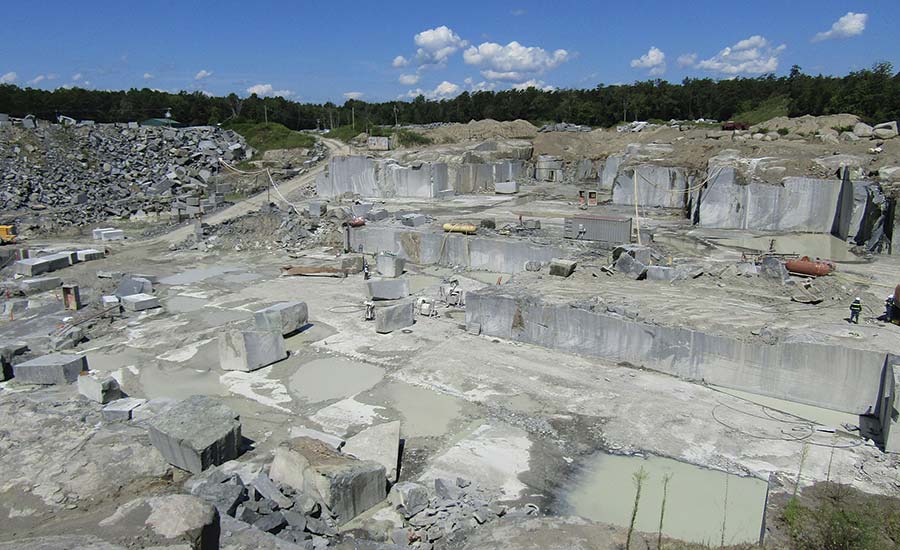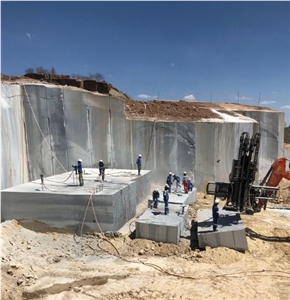Releasing the Elegance and Longevity of Granite Quarry: A Journey Through Time
Granite quarries stand as testimonies to both the geological marvels of our world and the enduring craftsmanship of mankind. The trip via time that granite quarrying represents is a compelling narrative of innovation, willpower, and the detailed dance between nature and market. Understanding the beginnings of this age-old method, the advancement of methods and tools utilized, and the contemporary value of granite quarrying reveals a tapestry rich in history and significance. As we peel back the layers of time and look into the intricate globe of granite quarrying, we discover a story that not just showcases the beauty and longevity of this magnificent stone but additionally sheds light on the profound impact it has had on worlds previous and present.

The Beginnings of Granite Quarrying
In the annals of history, the beginnings of granite quarrying can be mapped back to old human beings where the mission for sturdy building materials fueled the emergence of this timeless craft. From the impressive frameworks of ancient Egypt to the special temples of Greece, granite has actually been admired for its toughness, appeal, and durability. The Egyptians, with their sophisticated quarrying methods, were among the initial to draw out granite on a huge range, utilizing it to create huge pyramids and complex sculptures that have actually held up against the test of time.
As civilizations advanced, so did the techniques of quarrying granite. The Romans even more improved the strategies, developing tools and machinery to essence and transport granite over vast distances for their building projects. The toughness and visual charm of granite made it a valued product for cathedrals, monoliths, and sculptures throughout the ages.
Today, the legacy of old quarrying techniques resides on, with modern-day innovation boosting performance while still admiring the workmanship of our forefathers. The origins of granite quarrying serve as a testimony to human resourcefulness and the long-lasting allure of this worthy stone.
Tools and Techniques of Quarrying
Quarrying granite calls for specialized equipment to draw out the stone from the planet effectively and with precision. Modern quarries use diamond-wire saws, high-powered drills, and explosives to break apart the granite in a controlled manner.
Along with innovative equipment, conventional hand tools are still made use of in particular quarrying operations to guarantee delicate precision in drawing out the rock. Chisels, hammers, and wedges are utilized by skilled quarry workers to separate granite obstructs along all-natural cracks, a strategy that has been passed down with generations.
Furthermore, methods such as piercing vertical and horizontal holes for placing plumes and wedges, as well as the controlled usage of explosives in strategic locations, make it possible for quarry employees to remove granite successfully while maintaining the integrity of the stone. The harmony between modern-day innovation and typical craftsmanship is key to the sustainable quarrying of granite for generations to come.
Evolution of Granite Quarries
The improvement of granite quarries with time discloses a remarkable story of technical advancement and industry advancement. From old times where hands-on tools like knives and hammers were utilized to remove granite blocks, to the industrial revolution presenting steam-powered machinery for faster quarrying, the development of granite quarries has been marked by significant advancements. In recent years, the development of ruby wire saws and progressed exploration modern technologies has actually reinvented the extraction procedure, enabling much more accurate cuts and reduced wastage of raw product.

Granite Quarrying in Modern Times
The development of granite quarrying strategies from historic dependence on manual devices to the advanced techniques of contemporary times emphasizes a remarkable trip of technical development and sustainability methods within the industry. In modern granite quarrying, progressed equipment such as ruby wire saws, high-capacity excavators, and electronic exploration tools have actually reinvented the removal process. These tools enhance effectiveness, precision, and safety and security, permitting larger amounts of granite to be drawn out in a shorter duration contrasted to conventional methods.
Furthermore, modern-day quarrying methods prioritize sustainability and environmental stewardship - granite quarries in south africa. Firms are increasingly taking on environment-friendly approaches like water recycling systems, dirt suppression innovations, and rehab plans for exhausted quarries. These initiatives aim to minimize the environmental effect of granite removal, preserve all-natural sources, and bring back quarried landscapes to their initial state
Moreover, the integration of digital innovations like drones, general practitioner tracking, and 3D modeling has enabled quarry operators to optimize operations, hop over to these guys improve decision-making, and make sure the lasting management of sources. By embracing advancement and sustainability, the granite quarrying industry in modern-day times remains to thrive while promoting environmental duty.

Preserving and Safeguarding Granite Quarries
Amidst the progressing landscape of granite quarrying practices, preservation and defense of these important natural websites have actually come to be paramount problems for market stakeholders and environmental advocates alike. As granite quarries proceed to be a vital resource of this desirable rock, it is necessary to take on sustainable approaches that ensure their long life and safeguard bordering ecosystems.
Protecting granite quarries involves implementing efficient improvement strategies to recover the land post-extraction. granite quarries in south africa. This procedure includes improving the surface, replanting indigenous plant life, and producing environments for wildlife to thrive. By recovering quarries to their all-natural state, the ecological influence can be reduced, and the beauty of these landscapes can endure for future generations to value
Furthermore, safeguarding granite quarries requires implementing guidelines that govern liable quarrying methods. This consists of monitoring water quality, managing dust emissions, and handling noise degrees to alleviate disruptions to the setting and nearby communities. Collective initiatives between i was reading this industry players, governmental bodies, and conservation teams are crucial in promoting these requirements and making certain the lasting use granite quarries.
Verdict
To conclude, the trip through time in granite quarrying exposes the origins, devices, strategies, and advancement of this method. The contemporary era has actually brought improvements in quarrying methods, enabling the preservation and security of these beneficial natural deposits. It is necessary to proceed to promote lasting methods to make certain the appeal and toughness of granite quarries for future generations to value.